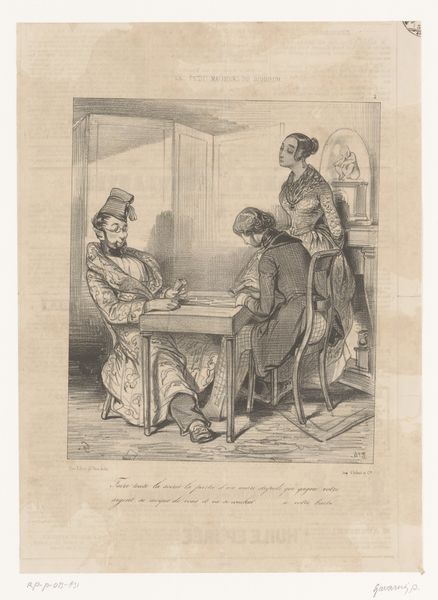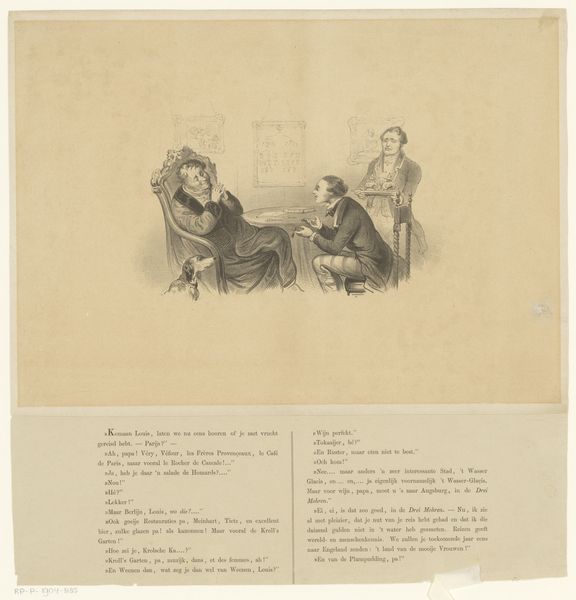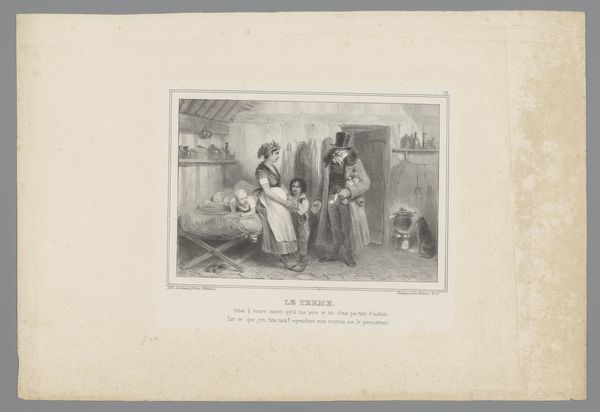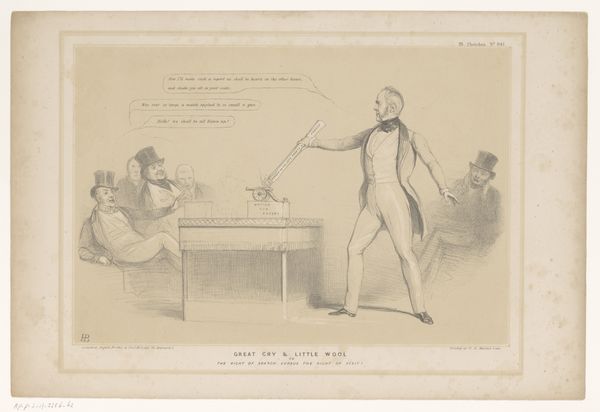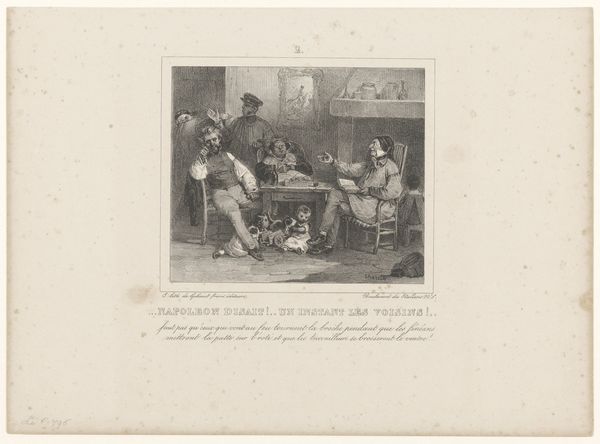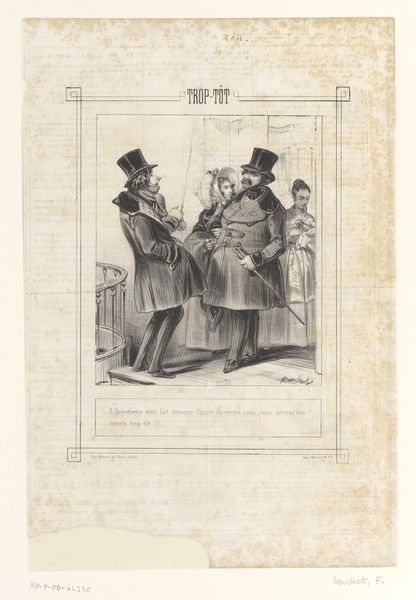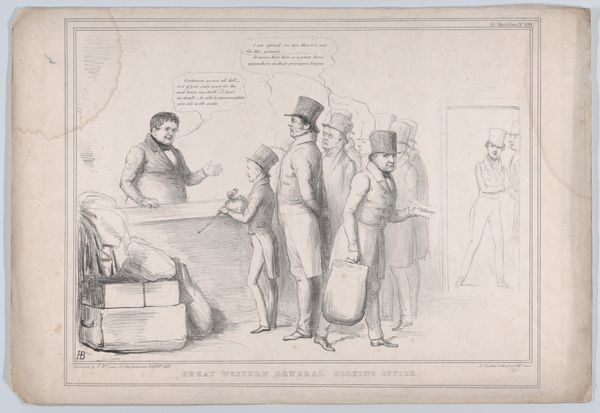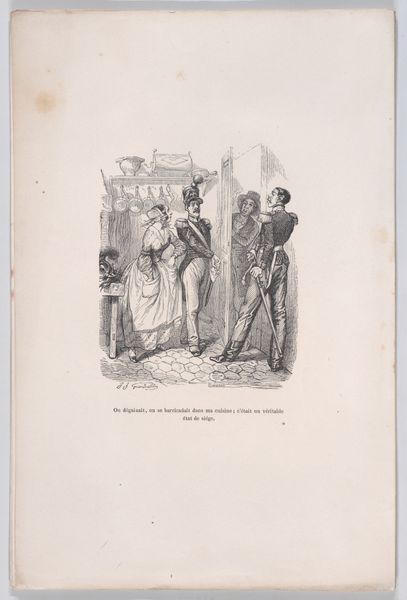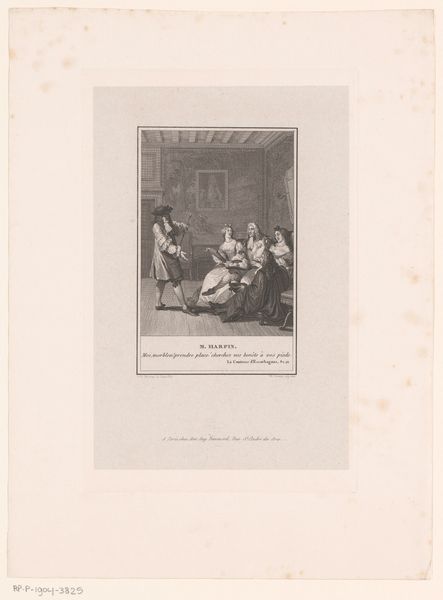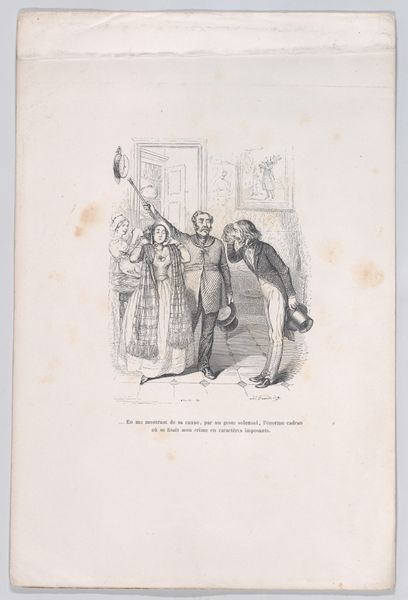
Dimensions: height 263 mm, width 363 mm, height 365 mm, width 363 mm
Copyright: Rijks Museum: Open Domain
Curator: This pencil drawing, “Mannen en moeder en zoon in gesprek,” created by Alexander Ver Huell sometime between 1832 and 1897, offers an intriguing look into domestic life of that era, now residing at the Rijksmuseum. My first impression is, uhm, sort of humorous! The composition feels a bit like a comic strip. Editor: I agree, it has a storyboard quality, a split narrative right before our eyes. From a production standpoint, consider the accessibility of drawing, the intimacy it allows an artist to have. And the reproductive qualities of pencil drawings made them highly valued as illustrations for a rising, consuming public. The detail here speaks to that intended readership, with the original dutch transcript. Curator: Indeed. I notice the stark contrast between the scene on the left, which involves what appears to be, uhm, a negotiation of some kind...and the one on the right where a courtship looks to be forming. The stiff posture of the male figure juxtaposed with that sweeping skirt hints to some dynamic in their exchange. Editor: Let’s not dismiss the material conditions framing such encounters. We see a clear delineation in status here rendered visible through costume and domestic adornment. This speaks to the economic stratification shaping social interactions during that time period. It really gets to the heart of Dutch life! Curator: Absolutely! There’s an undeniable realism grounded in Romanticism capturing something inherently genuine but somewhat ironic in its tone. Editor: Right, so, consider how drawing could mediate class consciousness, even shape new kinds of viewing publics around an image, as consumer object but also something contributing to some new social self-awareness. This one certainly shows two different interactions, social stratifications as you say. Curator: Well, thinking about that potential impact and how techniques help craft the perception and reflection on society, it’s hard not to feel the artwork did indeed spark something more than just a glimpse into the 19th century. Editor: Definitely, It brings those questions about artistic representation and social life right up to the surface.
Comments
No comments
Be the first to comment and join the conversation on the ultimate creative platform.
